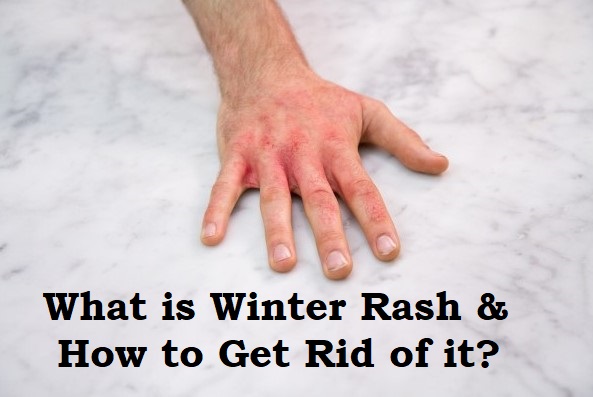With fierce winter weather conditions affecting a large part of the country, our internet-based dermatologists are seeing a spike in patients looking for relief from a dry, irritated, red rash. It ends up, that frosty streets and cold walkways aren’t the main results of icy tempests.
Winter rash, a condition caused when touchy skin responds to outrageous temperatures, is another way wild weather conditions can ruin your day.

Table of Contents
What is Winter Rash Symptoms?
Winter rashes happen more frequently in the winter because of the dry weather conditions. Winter rash side effects can include:
- Perceptible rankles
- Knocks
- Redness
- Tingling
- Tough situations
- In any event, chipping on the skin are signs
Diagnosing a Winter Rash
Your primary care physician can usually diagnose a winter rash during an actual test. They’ll survey your side effects and clinical history to determine the cause of your rash and recommend treatment.
If you haven’t changed your cleanser or exposed your skin to synthetics in a while, odds are your rash is because of dry skin. Assuming that you’re saturating your skin consistently and restricting your skin’s exposure to extreme cold or hot temperatures, something different might be causing your rash. Perhaps you are hypersensitive to a particular food or medicine. You may also have a disease or skin condition, like skin inflammation, psoriasis, or dermatitis.
Reasons for Winter Rash
Winter rashes frequently happen because cool, dry air, and cold breezes can strip the skin of the layer of normal oils and dead skin cells that help protect it. For some people, that could mean nothing more than dry skin that causes irritation and chipping.
However, for some people, cold temperatures can set off more genuine skin rashes, particularly in individuals who have a history of different types of rashes. Rashes associated with winter are usually caused by accompanying skin conditions.
Skin inflammation (atopic dermatitis)
Low humidity, regular washing, and utilizing harsh cleansers can dry out the skin and trigger dermatitis or exacerbate it, bringing about dry, bothersome skin that can be red and flaky.
Skin inflammation can appear anywhere on the body, but it is generally normal on wrists, elbows, and knees.
Cold urticaria (hives)
People whose skin is sensitive to the virus can develop hives, which are red welts on the skin that might be bothersome, enlarged, or joined by a burning sensation. Certain individuals might experience enlarged lips or swell in the throat, or they might feel weak or dazed.
Hives are most commonly seen on skin that has been exposed directly to cold air. To protect yourself from this, wear gloves, caps, scarves, and a comfortable coat.
Rosacea
The dry air, brilliant daylight and cold breezes of winter can welcome rosacea. This normal skin rash causes a flushed appearance and small apparent veins in the skin of the face.
The complete name for this condition is skin break-out rosacea since rosacea can have small, discharge-filled breakouts.
Psoriasis
People with psoriasis might find that the condition deteriorates in the winter because of low moisture and fewer long periods of daylight every day. Depending on the type of psoriasis an individual has, they might experience bothersome, textured patches of skin.
They might also result in broken skin that can drain and tingle, enlarged joints, touchiness, or a consuming sensation.
Coronavirus
Rashes are an unprecedented side effect of Covid, yet in the winter “certain individuals with the infection have COVID toes,” as per Dr. Johnson. “This is the point at which your toes become blue when they get presented to cool, sodden air.” The most effective treatment for this is aversion: Get the COVID-19 antibody (and promoter), wear a veil, and socially distance.
Viral diseases
There are a few viral contaminations that can cause skin rashes. These diseases include chickenpox, shingles, mononucleosis, measles, fifth infection, and roseola.
Each of these reactions appears to be unique. A prepared supplier will assist with the analysis.
Sensitivities (contact dermatitis)
In addition to chilly urticaria, which is a sensitivity to cold weather, cold temperatures, and dry skin can make people more susceptible to contact dermatitis.
This is a red, bothersome, flaky rash that appears on skin that interacts with something to which the individual has a sensitivity.
Treating a Winter Rash
Most medicines for a winter rash are cheap and don’t need a solution. For instance:
- Creams are frequently the main protection against a winter rash since they absorb moisture into your skin. Apply cream a few times each day, particularly after washing and hand washing.
- Oil jam also serves as a protective barrier to help fix dampness in your skin. Consider oil substitutes, such as Waxelene or Un-Petroleum, which can also keep moisture from becoming an issue.
- Normal oils, for example, olive oil and coconut oil, may relieve your aggravated skin and replenish its moisture. Apply to your skin depending on the situation.
- Vegetable shortening is another famous societal solution for dry skin because its strong oil content reestablishes hydration. Try slathering it on after washing or before bed.
- Washing with milk may relieve your irritated skin. Dunk a washcloth into the milk and place it on the impacted region of your body, or enjoy a steaming shower with milk added for around 10 minutes.
- Showers and cereal cleansers may also help to protect your skin. Buy a cleanser made with oats, or add finely ground oats to a steaming shower, and soak it for around 10 minutes.
- Effective cortisone creams, which are accessible regardless of a diagnosis, may help reduce your skin’s redness, tingling, and irritation. Follow the manufacturer’s instructions, or follow the recommendations made by your primary care physician.
- Most winter rashes improve with a change in lifestyle, home remedies, and over-the-counter (OTC) medicines. Others might endure or deteriorate. Scratching might cause your skin to break and bleed. This gives microscopic organisms the ideal opening and seriously jeopardizes your disease.
- Contact your primary care physician if you have a rash that isn’t responding to OTC medicines, are dying, or has serious side effects.
FAQs
Many people who suffer from cold urticaria see it disappear on its own after half a month or months. About around 50% of individuals who get cold urticaria will see it vanish in five years or less.
There are over-the-counter allergy medicines that can reduce tingling. Three common allergy medications are Claritin (loratadine), Zyrtec Allergy (cetirizine), and Benadryl Allergy (diphenhydramine).
You could have a winter rash if your skin is red, enlarged, or flaky. It might tingle or feel touchy to the touch. Knocks or bumps may appear in the impacted region. A winter rash can appear anywhere on your body, however, your hands, arms, and legs are the most helpless.
A winter rash can spread all through the entire body or just affect specific regions, usually the hands or arms, as they are more exposed to cold temperatures than the different regions of the body. Side effects of a winter rash include redness and tingling.
